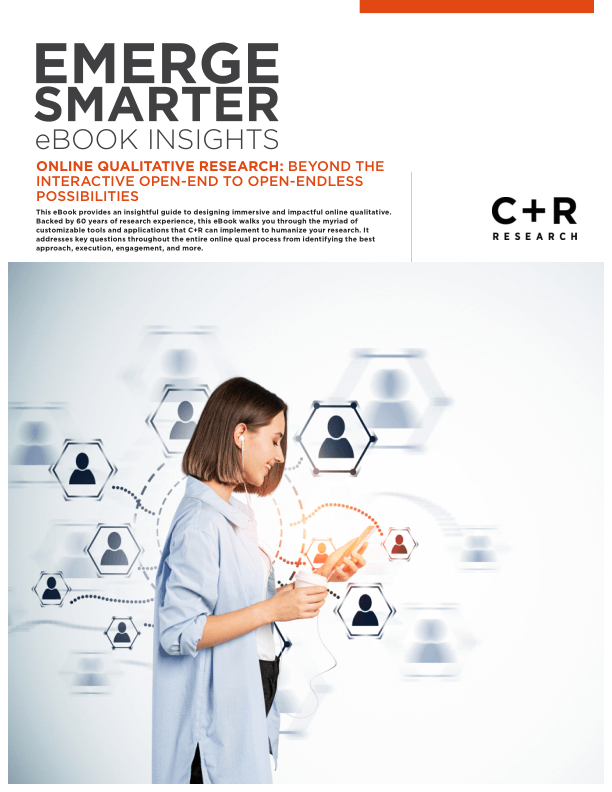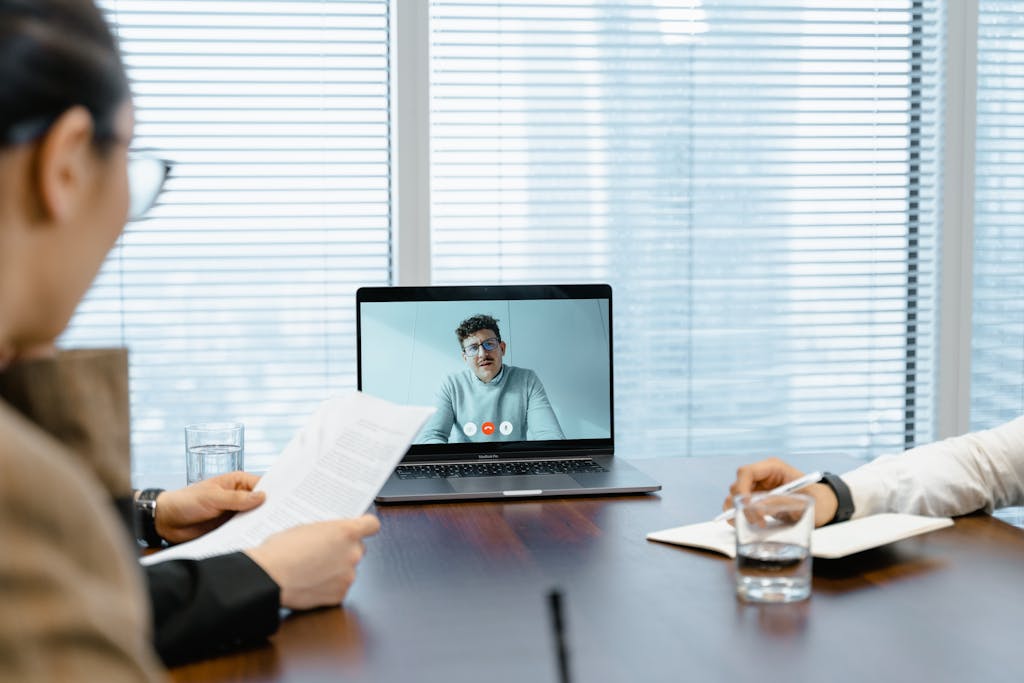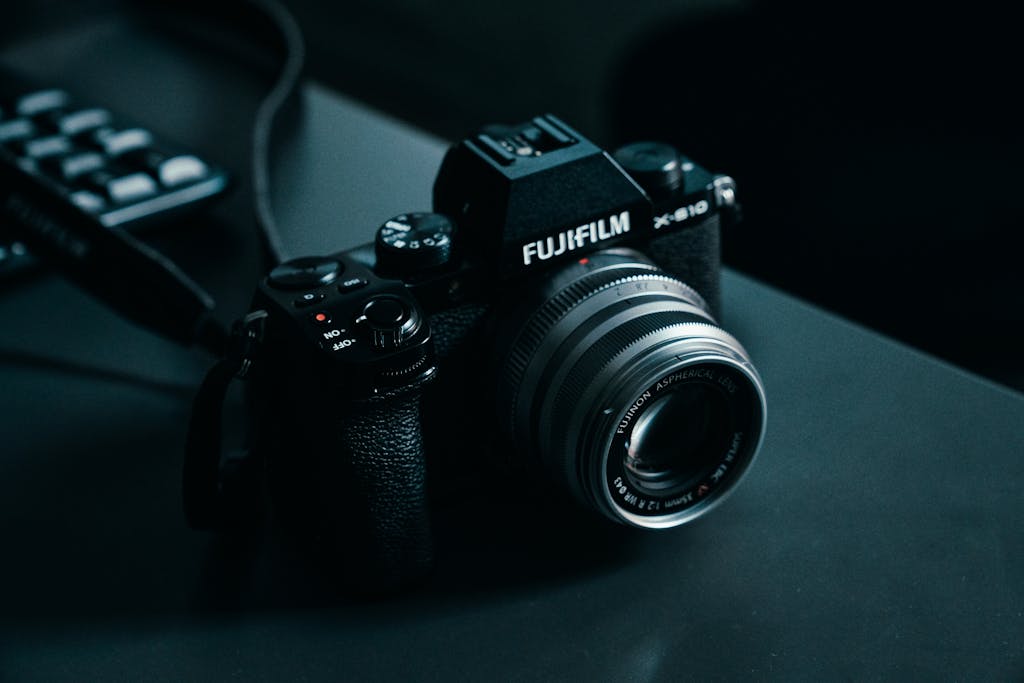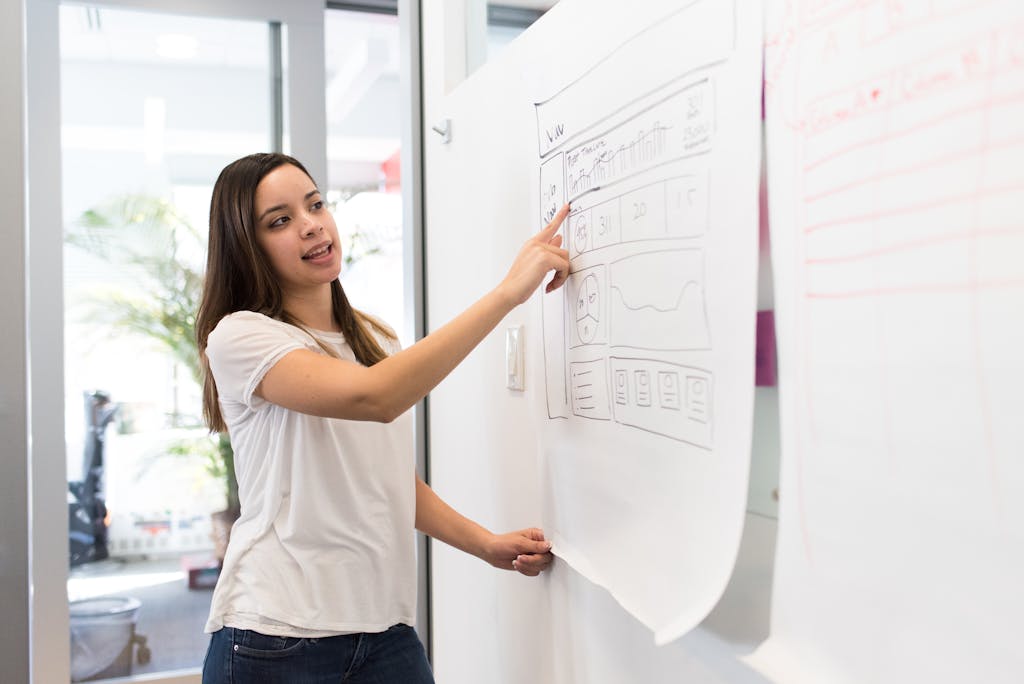
Mastering Online Qualitative Research: A Comprehensive Guide
INTRODUCTION
In today’s digital era, technology and the internet continue to shape our lives. The average American spends almost seven hours a day online, highlighting the increasing reliance on digital platforms. This shift has given rise to a generation of digital natives, such as Millennials and Gen Z, who are effortlessly fluent in navigating the online world. Coming on the heels of Gen Z is Gen Alpha – a generation who will live their entire life in a digital world.
Given the widespread integration of the internet and digital technologies, it’s not surprising that online qualitative research has emerged as an influential method, enabling marketers to connect with individuals in novel and unprecedented ways. By leveraging the power of the internet, this approach has transcended geographical boundaries and transformed the traditional research landscape.
Over the past two decades, online qualitative research has not only brought people closer and more connected but has also facilitated meaningful interactions between marketers and consumers. This approach allows researchers to enter the lives of target audiences and gain insights that were previously inaccessible. The versatility and accessibility of online platforms have opened up new possibilities for engagement, enabling marketers to delve deep into the intricacies of consumer behavior and preferences.
As innovators in custom research, C+R was an early adopter of online qual. When clients come to us with new problems or ideas that might involve a new approach, they trust us to experiment to create personalized results. One such early experimentation led us to create a practice of online qualitative research within C+R.
Despite our own early adoption, we realize that online qual’s entrance into the wider research world was (like most new technologies) initially greeted with some skepticism.
Though this early skepticism has largely disappeared, the misconception that online qual is a ‘replacement’ method of research still persists among some market researchers. The truth is, online qual is not a replacement for in-person qual— or any other type of research. It is an expansion, something new with capabilities that have increased dramatically over the past two decades. In fact, now with even more digital tools at our fingertips, the learning from online qual can go deeper and broader than it ever has, with markup tools, video responses, emotion tracking, real-time video chats – the list goes on. And once you know how to leverage these myriad capabilities, you will have the power to connect with your consumers as they are, whenever and wherever they are.
contributors to this guide
Darren Breese
Vice President, Online Qualitative Research
Erin Barber
President + Chief Client Officer, C+R Team
online qual: key benefits
Before discussing all of online qual’s capabilities and how to leverage them, it’s important to note the key strengths of this approach as a whole. Online qualitative studies offer many benefits, but some particularly unique ones include: a closer connection to your consumers; larger sample sizes for broader learning; asynchronous flexibility; and a comfortable, accessible environment for participants for more depth in responses.



closer connection to your consumers
If you’re looking to dive deep to better understand your consumers and their unique needs or be a part of their everyday experiences, then online qual is the way to go. The various methods of online qual allow you to witness the personal moments of your consumers’ lives when you cannot (or should not) be there in person.
inherently flexible
A popular feature of online qual is its “anytime/anywhere access”. No travel is necessary, and you can view responses, ongoing follow-ups, and moderator interactions 24/7. You and your team can unobtrusively observe whenever and wherever it is convenient without missing a thing.

larger sample size
More people can participate simultaneously than what’s possible for in-person qual, and you can hear equally from every one of them. This enables you to capture both breadth and depth while connecting to consumers across the country – or even around the world. Online qual is especially helpful when you’re trying to reach small populations who may be geographically spread out (such as teens, B2B professionals, or specific segments of your consumer base

low pressure
For participants, online qual offers a comfortable, accessible environment. There is a reduced need for fluid conversation techniques like laddering, side-bar topics, or small talk to reduce social pressure. We can diminish bias and dishonest responses as well as tackle more sensitive topics, knowing respondents are more open in the comfort of their own homes. Plus, without strict time constraints, participants have time to organize their thoughts into more thoughtful and insightful responses.
Online Qual Methodologies
Now that you know some of the benefits of online qual, let’s discuss some of the methodologies and tools. As you’ll see, online qual offers so much more than just versatile discussion capabilities. Below is a list of methods—both asynchronous and live—that we’ve successfully employed across a range of online qual projects.
When planning your next research project, consider blending some of these types and approaches to create an in-depth holistic approach. However, keep in mind that adding complexity can impact the cost and/or timing of your study.
Asynchronous Interactive Online Discussions
Asynchronous interactive online discussions take place over a few days (typically 2-5) that observers can view at any time. Immersive online discussions are ideal for getting reactions to new concepts and products, message optimization, consumer profiling, and mini digital ethnographies. They also work well for exploring personal topics that participants may be reluctant to speak about in front of others. Participants can also upload images and video that illustrate their thoughts and bring their experiences to life.
We recently used an immersive online discussion board to help a soft drink company connect with Gen Z consumers and learn what social causes were important to this segment. The discussion board used text-, photo-, and video-based activities to mimic social media spaces where the teens and young adults already felt comfortable, thus encouraging them to open up and share their ideas.
FlashQual
FlashQual is a quick-turn version of online discussion boards. These studies are truncated in length and use a smaller/broader sample for fast, quality feedback. They are useful for when you urgently need immediate results, such as to gain a pulse check on a product, concept, message, or co-creation/ ideation idea.
Shopping Missions
Shopping Missions involve photo or video footage of in-the-moment store trips, capturing pre-tail, retail, and post-tail behaviors. This helps uncover influences, pain points, surprises, and brand perceptions. Consider these for path-to-purchase, shopper journeys, aisle/category optimizations, and brand triggers/barriers.
Mobile/Digital Ethnographies
Mobile/Digital Ethnographies involve an in-depth digital exploration of participant behaviors through interviews, observation, and missions (via video, pictures, etc.). Witness authentic reactions in consumers’ natural environment, capture their feelings regarding personal/emotional topics, and understand their in-the-moment behaviors. Applications include consumer profiling, consumer experience, and path-to-purchase journeys.
Netnography
Netnography is an unobtrusive exploration of participants’ social media portfolio for immersive, naturalistic observation of key audience behaviors. We’ve used netnographies for consumer profiling, as part of digital ethnographies, and to capture brand/competitor presence or engagement.
Unobtrusive Observation
Unobtrusive Observation involves motion-activated video or wearables that capture unmoderated authentic consumer behaviors and product usage and occasions to identify unarticulated elements. This method can be used to identify consumer pain points, as well as white space for brands and products.
Unobtrusive observation is a great tool when there’s a need to understand natural, unbiased behaviors. During a busy holiday shopping season, we helped a major toy manufacturer gain understanding of parents’ toy shopping journeys using wearable video cameras that the parents wore as they shopped. Through unobtrusive observation, we captured parents’ unfiltered reactions during a time when the number of holiday shoppers made it impractical to do in-person research.

Journaling
In-depth, detailed accounts of consumer behaviors and feelings around a specific topic over a period of time, capturing in-the-moment feelings, influences, and needs across multiple occasions with pictures and/or video. Journaling is helpful for consumer profiling, path-to-purchase, consumer journeys, user experience, product testing, and brand engagement/touchpoints.
Virtual In-depth Interviews (idis)
Live, in-depth, and flexible one-on-one discussions (around 30-60 minutes each) allow you to see consumer reactions in the moment and help your team build empathy with consumers. Virtual IDIs offer the flexibility to dive into more personal topics and/or complex lines of questioning. Useful applications include concept/message optimization, consumer profiling, and foundational learning.
Virtual Ethnographies/Shop-alongs
Similar to Virtual IDIs but more in-depth. For example, during an interview, we may ask the respondent to take us on a tour around the home/kitchen/closet (as needed for the research). Virtual ethnographies are often paired with shop-alongs where we follow consumers to their favorite stores and watch them shop for products. This captures real-time thoughts and feelings about the experience. This method works well for consumer profiling and foundational learning.

User Experience
Moderated or unobtrusive recordings of consumer engagement with your website/product/etc. to capture navigation and facial expressions. These studies are useful for observing natural behaviors and for honing in on interesting areas, gaps, and opportunities for your website/product. We have used this technique in usability studies as well as to study consumer experiences, to gather product and concept reactions and optimizations, for path-to-purchase, and to conduct card sorts.
Digital Mashups
Live, web-based dyads or triads create a dynamic digital conversation with a small group, allowing participants to engage and build upon each other. We have used this method for concept/message optimizations, consumer profiling, and foundational learning.
Hubs
Combine/layer any of the above methodologies within an online discussion to create a multi-faceted, central resource that provides a holistic portrait of the data. Hubs are useful for consumer journeys/experiences/behaviors, path-to-purchase, product usage/usability, concept or message optimization, and brand engagement/competitive landscapes.
online qual tools
Within the various methods for doing online qual are specialized tools you can utilize to gain insight into your consumers’ needs and pain points. As with the methods, consider blending multiple tools (as appropriate) to achieve your desired research goals.
Projectives
Dive deep into consumers’ unconscious/unarticulated perceptions of brands and their landscape. We employ a range of techniques including: Brand Personification, Archetypes, “Imagine…,” Storytelling, Eulogies, and Love Letters.
Emotive Exploration
A more specialized type of projective technique, emotives help identify respondents’ underlying feelings. Projectives such as Bitmojis and Emotive + Metaphor Elicitation help bring respondents’ emotions to life.

Sensory Experience Elicitation
Using elicitation interview techniques, we break down consumers’ experiences and areas of product engagement to their basic components, creating a complete understanding of all the individual elements.
Collage/Imagery Activities
Fun and versatile image uploads relay themes or emotions that may be otherwise challenging for consumers to articulate.

Product Sorting or Perceptual Mapping
These techniques allow us to contextually explore how consumers view the landscape of a category to understand things such as perceived competitors or where a brand “lives” in a space, among other questions.
In-the-Moment Mobile Image and Video Confessionals
Webcam or live remote interviews (such as at a store while shopping) can be used on a smaller or more ad-hoc basis to enrich findings. These confessionals are typically of shorter duration than virtual IDIs and ethnographies, usually 1-2 minutes in length each.

Defining Moments/Journey Mapping
Deep dive into key moments of discovery, engagement, usage etc. to bring consumers’ relationships with a product or brand to life.
Unobtrusive Digital Observation
Understand conscious and/or unconscious engagement via screen recording, eye-tracking, and passive metering, or follow consumers’ physical paths via geo-location.
Video/Image Markups
Heat maps synthesize reactions to shelf sets, concept tests, etc. and highlight areas of consumer engagement, confusion, or frustration.

Online Co-creation/Ideation
Consumers imagine and create optimized products or services by working together in an online creative hub, taking time to add “likes” and comments to build on each other’s ideas. For example, as part of a larger online qual study on consumers’ experience purchasing meat at retail, we led respondents through ideation activities to help them imagine and articulate ways that their go-to meat department could innovate and improve.
Shopping Missions
Live or asynchronous, digital or in-store, shopping missions help to capture consumers’ reactions at the shelf and areas of engagement as it’s happening. These missions are usually of shorter duration than shop-alongs.
Emotional Video Facial Coding
Code consumers’ facial cues to understand their underlying emotions as they express themselves in video.

creating a custom online qual project: considerations beyond methodology
While there are many methods and tools that can be deployed, creating an
online qualitative project begins with the basics of any research project.
Project Goals
What is your project’s scope, and what are you hoping to achieve? Consider the following when building your research plan:
- Do you need answers quickly, with ready access to usable results?
- Do you want to immerse with your consumers?
- Do you want to understand consumer behavior over time?
- Something else?
- All of the above?
No matter what your research needs, C+R can create a custom study that applies to one, some, or all of the above.
The Best Method
Sometimes it’s difficult to know if your research questions will be better answered by in-person or online qual. If you’re debating between these methodologies, consider the following:
- What are your motivations to use one vs. the other?
- Could the answer be to use both?
- Used in combination, online and in-person qual creates a holistic approach to understanding your consumer with both breadth and depth.

Experience + Expertise
Have you/your team done online qual before? If you haven’t, no worries! You can start simply, choosing one method and 1-2 tools to show your team how easy it is. Or you can work with a trusted partner, like C+R, who has online qual experience to achieve something creative that demonstrates the unique insights you can achieve. Either way, be sure you schedule regular touchpoints/engagements with your team to ensure you are all kept up to speed and are able to immerse in the research.
Role of the Research
How will this piece of research live/interact with other initiatives? Is it part of a larger, multi-phase project, such as a quantitative study or a workshop? Is it supporting prior research, or bringing it to life?
All of C+R’s research is custom across our offerings. In addition to creating a research plan specifically for your needs, we also have years of experience folding the results into other phases of research or into workshops.
Point of Contact
Who’s involved? Is it just you, or is there a broader team? If there are many people involved, you risk being bombarded with requests and questions. Consider scheduling a regular touch base with your team to gather feedback and consolidate key questions you wish to focus on. Your moderator can be part of this conversation to help hone in on priorities or to help you set boundaries to avoid overtaxing participants.
Level of Engagement
How involved do you/your team want to be? With online qual, you can develop an engagement plan that fits you and your team’s schedules and work style. Possibilities include:
- Platform Access + Onboarding: Real-time access and training on the online platform to view research as it’s happening; ability to add follow-ups/callouts for the moderator
- Team “Work” Sessions: Regular touchpoints with the moderator to gauge initial team reactions and identify key probes
- “Star” Participants: Assign team members specific participants and meet to share different perspectives of each individual’s “story”
- Debriefs: Moderator-led discussions to review high-level insights and areas to dig deeper
- Email Highlights: Regular e-mail updates sharing emerging themes to encourage team participation and keep everyone up to date

Recruitment
Who do you want to talk to, and how will you find them? The first thing to consider is your target audience. “Gen pop” respondents are typically the easiest to recruit; however, it is also possible to recruit respondents with specialized attributes, such as B2B customers or people representing segments of your consumer base. Keep in mind that additional complexity, such as typing tools or specific characteristics, could mean more recruitment time and/or increased costs.
Your methodology can also impact the types of respondents recruited. For example, if you want to conduct any sort of video interviews, you’ll need to ensure the participants are comfortable on camera and are articulate. For projects heavy with projective activities, you may want to consider screening respondents for greater creativity.
Be sure to consider how you are rewarding participants based on the level of work they’ll do in your study. While good incentives are always key, there are other ways to draw respondents, such as with an opportunity to try or keep a product, or a chance to feel acknowledged and heard by a favorite brand.

Non-Traditional/Specialized Recruits
Are you seeking a “needle-in-the-haystack” respondent? If so, be sure to explore non-traditional recruiting options. One good option is to recruit via social media (including your own pages).
C+R specializes in recruiting and interviewing several specialized demographic targets, including:
- B2B professionals (such as contractors, telecommunication decision makers, food service operators, healthcare professionals, etc. )
- Teens
- Gen Z
- Millenials
- Multicultural respondents such as African-American, Asian, Hispanic (both English and Spanish speaking)
- LGBTQ+
Conclusion
The myriad of ways for executing online qual creates several important considerations when building your research. As you can see, online qual is much more than just open-ended questions posted to a discussion board.
While it may seem like there are an overwhelming number of options within online qual, the important thing to remember is that the technology is there to support you and help you achieve your research goals. Also, remember—C+R’s experts are here to walk you through the process of designing custom online qual that will best answer your important questions and support your business initiatives.
Darren Breese
Vice President, Online Qualitative Research
Erin Barber
President + Chief Client Officer, C+R Team


